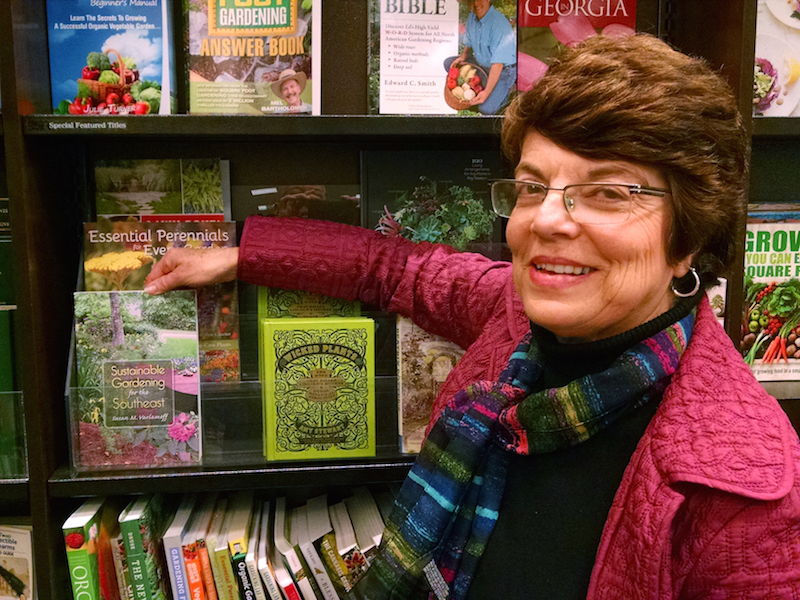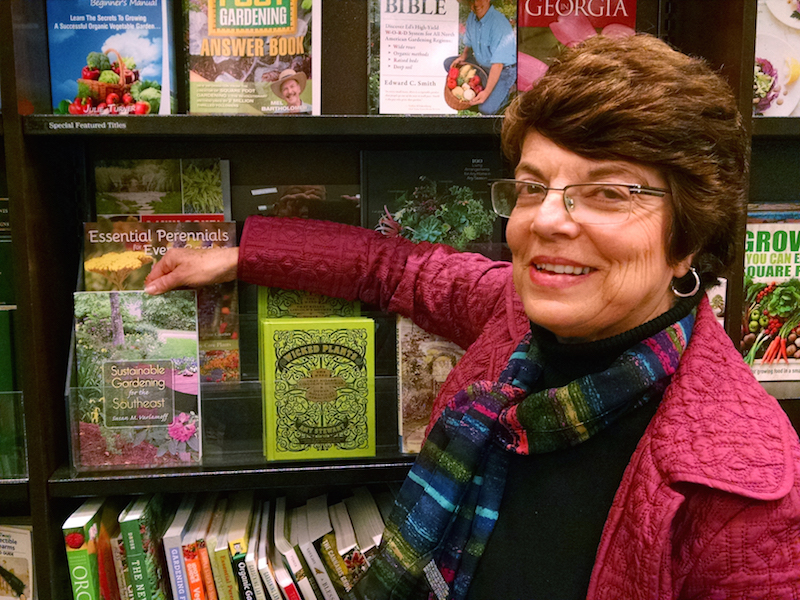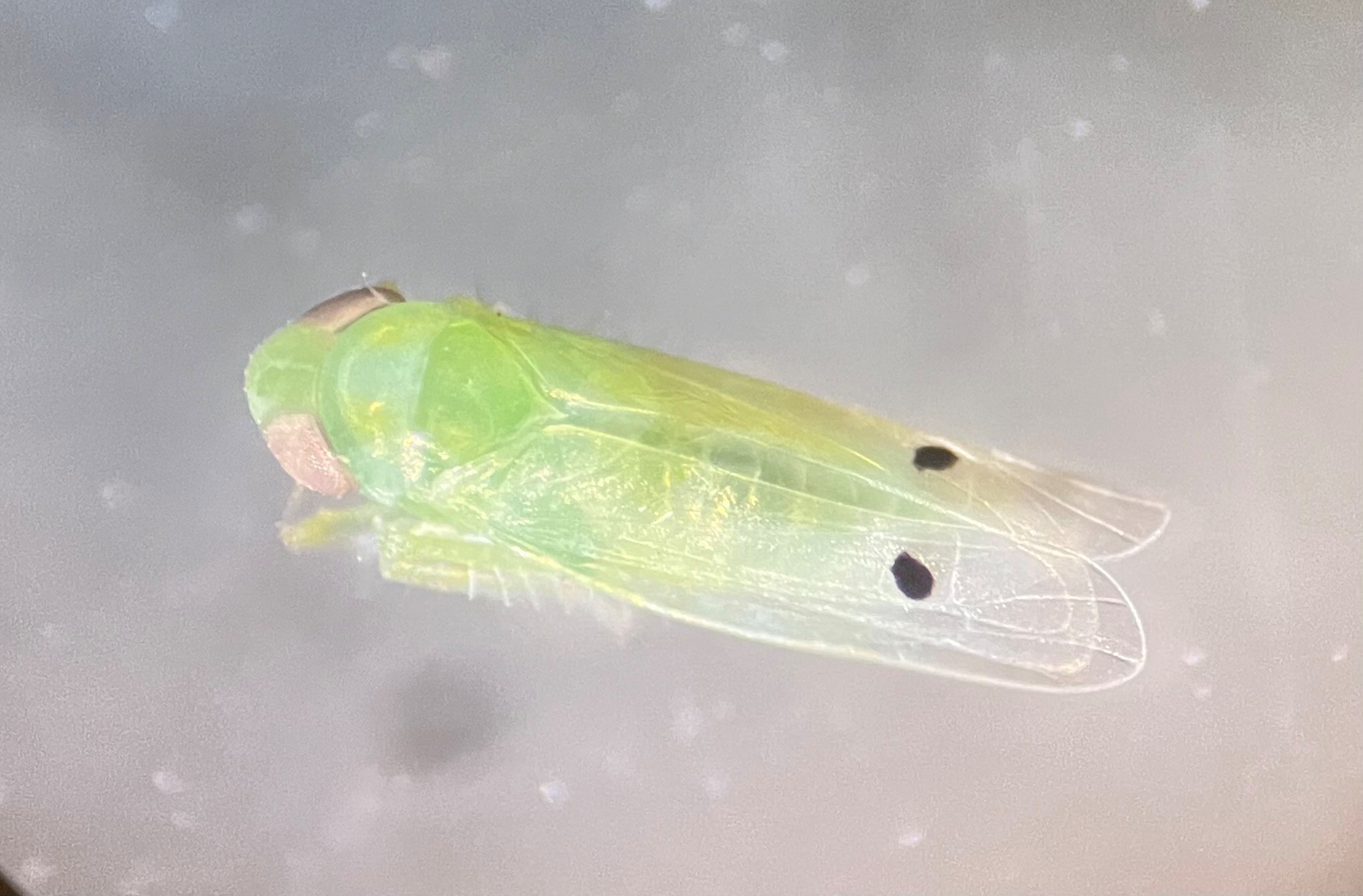Susan Varlamoff’s title at the University of Georgia College of Agricultural and Environmental Sciences – director of the Office of Environmental Sciences – suits her. She was a boots-on-the-ground environmentalist long before moving to Georgia and joining the university.
As a housewife and the mother of three young children living in Eden Prairie, Minnesota, she successfully fought the expansion of a toxic landfill that was proposed for her neighborhood. Then, she wrote an award-winning book about it, “The Polluters: A Community Fights Back.”
The University Press of Florida released Varlamoff’s new book, “Sustainable Gardening for the Southeast,” this month. In it, she aims to teach home gardeners how to protect the environment around their houses.
The concept for the book began eight years ago, when Varlamoff initially became employed by CAES on the college’s Griffin, Georgia, campus. She read a water quality study that showed pesticide levels in urban watersheds are higher than in rural watersheds.
Varlamoff, along with a team of CAES scientists, reasoned that farmers in rural areas minimize pesticide use due to its high cost; furthermore, professional pesticide applicators must be certified. “This led us to believe that homeowners were harming the watersheds by improperly applying pesticides,” she said.
As a result, the UGA team developed a survey for home gardeners, mainly in the metro Atlanta area, to learn if urban gardeners wanted to learn more about sustainable gardening and then implement the practices they learn. The survey revealed that approximately 70 percent of homeowners wanted to garden and protect the environment, and they wanted more information on how to do so. The team produced a training manual and brochures that UGA Cooperative Extension agents used to present trainings.
The development of these materials led to Varlamoff’s decision to compile the information in book form. “It’s an issue that’s time has come. Basically, I pulled together science-based information from Southern land-grant universities on various aspects of environmentally friendly gardening. There are a lot of books on these individual topics, such as water conservation and natural pest control, but not one book on the entire topic,” she said.
The book teaches readers how to create an ecosystem in home landscapes, according to Varlamoff. “We talk about using this pesticide and that one, but if you create functional ecosystems, then Mother Nature will do the heavy lifting and manage pests naturally,” she said.
Topics covered include reducing water usage through xeriscaping, planting trees to reduce climate change, growing food and bringing wildlife to your doorstep. The most important thing, Varlamoff says, is to begin with nutrient-rich soil as the foundation.
Varlamoff has used her Lilburn, Georgia, landscape as a 23-year field study site. “I can see how different my landscape is from more than 20 years ago until now. I don’t have any plants that attract a lot of pests,” she said. “If they do, poof! they go to the compost pile.”
She has eliminated all invasive plants, like kudzu and privet, and added many native plants. “My neighbor is a native plant aficionado, and she gives me plants that find a home in my garden,” Varlamoff said.
Her “low-maintenance” landscape attracts 20 different types of birds as well as other wildlife. “It’s beautiful to have a yard that is filled with critters because it’s a wonderful nature lesson for children,” said Varlamoff, who is now a grandmother of two.
Installing different types of trees and native plants is what attracts local, native insects and wildlife that work together to keep pests “in check” without pesticides, she said. “As I say in the book, if you really want to make an environmentally friendly statement in your landscape, plant a native oak tree,” she said. “They are the biggest biodiversity attractors.”
“(UGA turfgrass specialist) Clint Waltz suggested reducing the amount of turfgrass in my landscape to 40 percent, so I did. I’ve turned my whole backyard into a woodland area with paths, and I’ve reduced the grass area in the front by putting in shade trees,” she said. “I tried to take a very balanced approach. You can create an environmentally friendly landscape without sacrificing beauty, and I still have plenty of grass for picnics and family activities.”
Varlamoff says home gardeners don’t have to turn their backs on plants that don’t fit the sustainable gardening model. “It’s OK if you have a camellia. It’s beautiful. It doesn’t attract a lot of wildlife, and it’s not native, but that’s OK,” she said. “A few of the plants my husband likes are semi-invasive, but we keep them because he likes them.”
While doing research for the book, Varlamoff found several studies that link cancer cases to families who used DDT in their landscapes in the late 1950s. “The study said the risk of acute leukemia was seven times higher in these families,” she said. This hits close to home for Varlamoff, who was 14 years old when her 5-year-old sister died of leukemia. “There’s nothing like walking behind your sister’s coffin to make an impression on you. To me, there are very few good reasons to use pesticides in your landscape.”
“Sustainable Gardening for the Southeast” can be ordered through the University Press of Florida at upf.com.




